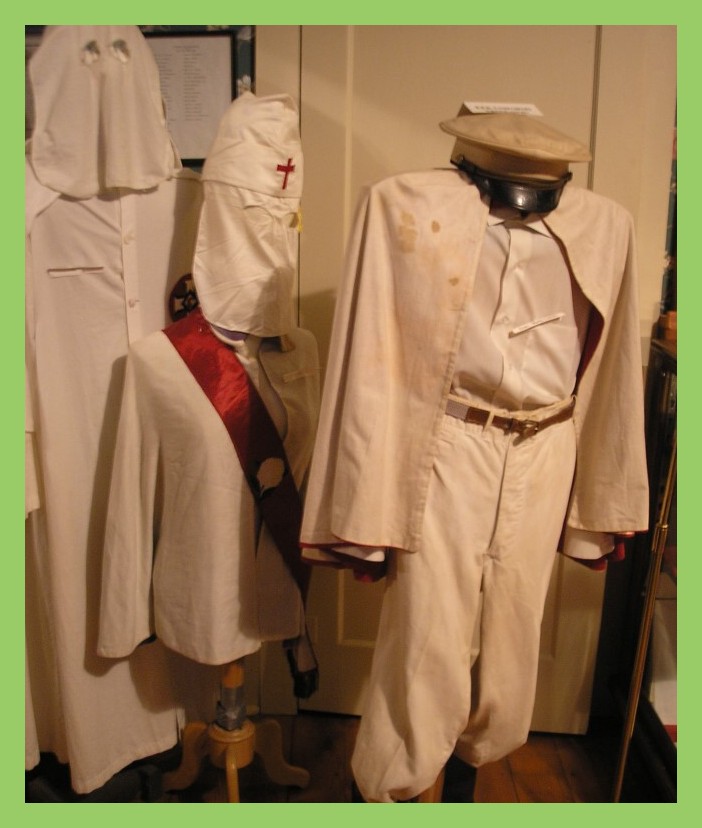A photograph of some examples of Lykens Valley area Ku Klux Klan uniforms. The Klan was very prominent in the valley in the mid-1920s.
Judge Robert E. Woodside, who was a native of Millersburg, Dauphin County, Pennsylvania, published his memoir, My Life and Town, in 1989. Included in the work was his reflection on the way the news media covered what he referred to as “outrageous” groups and events. When a major Ku Klux Klan demonstration occurred in Millersburg, Woodside was the local correspondent for the Harrisburg Patriot. The detailed story he submitted was cut to a terse one-line statement. Here are his reflections on the Ku Klux Klan:
THE K. K. K.
In the twenties the Ku Klux Klan was active in our area, although to this day I could not identify any Millersburgers as a member.
One Sunday evening Buff Hawley and I while walking down Market Street saw two cars stop at the square. Several hooded men jumped out, hastily placed a large white cross north of the fountain, set it on fire, placed pamphlets on the ground nearby, rushed back to their cars and sped away. Our effort to ascertain the license numbers of rthe cars was thwarted by a white cloth covering the plates. We looked at the pamphlets extolling the virtues of the Klan, but didn’t keep any for fear we would be accused of being members.
Another K. K. K. cross was burned some months later in front of the home of a poor family, all the members of which were fine people except one son who reportedly attempted to rape one of his friend’s mother, and later to have attacked a young girl on the street. A note was left on the porch by the hooded Klan members directing the boy to leave town, never to return. Whether he left because he was in trouble with the law or the Klan, I do not know, but he disappeared and as far as I know he was never heard from again by any Millersburger.
The K. K. K. had a parade and picnic in Millersburg. The parade was longer that any previously held in Millersburg. Dozens of bands led thousands of Klansmen from all over the state. At the picnic, contests of all description were held for numerous valuable prizes.
I was the Millersburg correspondent for The Patriot paid by the number of inches published. A community picnic was often good for four or five inches of news about speakers, contest winners and softball scores. Here was news of the biggest parade and the largest and most elaborate picnic ever held in this area. I sent in the names of the bands and units, the winners of some of the contests, the speakers’ names and described the unusual fireworks set off from an island in the river. I envisioned a story with five or six inches on the front page. Imagine my chagrin when I read in The patriot on an inside page, “The K. K. K. had a parade and picnic Saturday afternoon in Millersburg.” That was all! I did not understand it at the time, but I came to realize that the way the press killed fringe movements was to ignore them. It was effective.
How different it is today! [1989]. The more outrageous the cause the more violent the participants, the more ridiculous the antics, the more attention it receives from the media. It’s unbelievable. The TV stations and particularly the networks rather than the press are primarily responsible. Were that picnic held today, national television would be in Millersburg recording the K. K. K. speakers and taking pictures of the parade and picnic.
____________________________________________
It is not known if a 1927 Klan “demonstration” at Millersburg was the one referred to by Judge Woodside. It was previously reported about here in a blog post dated November 19, 2019. See:
Attempts to locate the specific one-sentence report in the Harrisburg Patriot have thus far been unsuccessful.
Corrections and additional information should be added as comments to this post.
